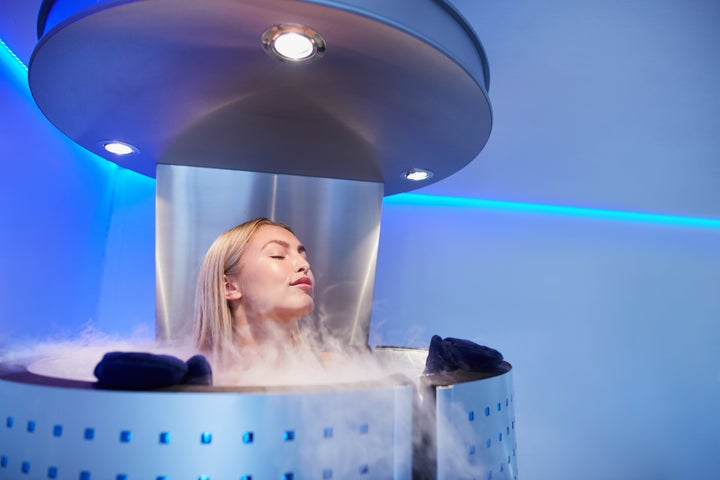“I was afraid of the cold, trying to comprehend what those temperatures would feel like,” says Sarah, 23, from Essex who is one of a growing number of people experimenting with cryotherapy: a cold treatment that uses liquid nitrogen to plunge your body to -200 degrees for three minutes. “When it happened I was hugging myself to keep warm.”
Used by athletes and celebrities - including Gary Barlow - proponents of cryotherapy claim it can help with muscle regeneration, boost your immune system and rejuvenate your skin.
But before standing naked in freezing temperatures you might want to know whether it really lives up to the hype or is just another expensive beauty fad. “Honestly I’m not so sure,” says Sarah.
[Read More: 6 things to do that will boost your wellbeing]

“When I got into the chamber it felt like a tingling sensation all over my body: I got goosebumps. It was similar to when you forget your gloves in the winter and go outside,” Sarah explains, adding that while your body is submerged in the chamber your head remains above it the entire time.
“You’re on a Beyonce-style platform which lifts you up to adjust to your height.” And if you’re worried about the danger of being left on your own in -200 degrees, don’t be: Sarah had someone supervising throughout the treatment.
Sarah says she wouldn’t bother doing it again, unless she had some kind of acute pain or a specific injury. But Annie Negrin, who trained for a marathon in 2017, tells us that cryotherapy did help her with a persistent knee injury. “I have to say I’m not sure I would have survived such rigorous training without those.”
But are there any proven medical benefits to cryotherapy?
There is a lot of debate around the supposed claims of cryotherapy. Proponents say that it can help to alleviate muscle and joint pain, promote weight loss, and provide anti-ageing benefits for your skin. Although there is little scientific evidence to back this up.
Sports injury analyst Michael A Gleiber tells HuffPost UK: “Cryotherapy is similar to the concept of applying an ice pack to a painful muscle or joint, but on a larger scale. Ice packs can certainly be helpful in reducing inflammation, but there isn’t currently any conclusive scientific evidence to prove that full-body cryotherapy works better.”
Gleiber also says there are more effective ways to get results. “You’ll get much longer-lasting results by staying out of the sun, using sunscreen and avoiding unhealthy habits like smoking. If you want longer-lasting skincare treatments, you’d be better off seeing a dermatologist.”
The NHS does not use whole body cryotherapy - which is the most popular form currently available to consumers - but does use localised cryotherapy treatments to treat skin conditions, like warts, and cancer cells.
“A wide variety of superficial benign (non-cancerous) lesions can be treated with cryotherapy, but it is most commonly used to remove actinic keratoses: an area of sun-damaged skin found predominantly on sun-exposed parts of the body,” Cancer Research UK states. “It is a local treatment, which means it only treats the area where you have treatment. It doesn’t treat cancer cells in other parts of the body. After the treatment the body’s immune system gets rid of the dead tissue over a few weeks.”
Can cryotherapy have negative side effects?
For most people cryotherapy is well-tolerated albeit temporarily uncomfortable - Sarah says the feeling of cold and having goosebumps went away within minutes. The British Association of Dermatologists (BAD) says: “A discomfort can occur both at the time of treatment and for a variable time thereafter.”
You might notice some swelling and redness, but this is normal and will usually settle after a couple of days. A BAD spokesperson says taking a painkiller and hour or so prior to the treatment, may reduce discomfort.
People who are pregnant or have severe hypertension or heart problems should not use cryotherapy, states NHS advice.